
A joyful photograph reflecting the historical changes at the top of the Archdiocese of Luxembourg. Last week, Bishop Leo Wagener (left), became the archdiocese’s first auxiliary bishop, and yesterday Archbishop Jean-Claude Hollerich (right) was created the first cardinal in the country’s history.
Cardinal Hollerich, who also leads the Commision of the Bishops’ Conferences of the European Community (COMECE), consecrated Bishop Wagener on 29th September. The latter’s appointment is undoubtedly related to Cardinal Hollerich’s European duties, while the red hat is at least in part a sign of support for the Catholic community in the small grand duchy. The developments of the last week were certainly momentous.
As of yesterday, each country in the Benelux has its own resident cardinal: Willem Eijk of Utrecht, Jozef De Kesel of Mechelen-Brussels and now Jean-Claude Hollerich of Luxembourg. The latter two were created by Pope Francis, while Cardinal Eijk’s red hat was given to him by Pope Benedict XVI.
Cardinal Hollerich was one of 13 cardinals created yesterday. The College of Cardinals now has 225 members, of which 128 are under the age of 80 and will thus have duties in Rome and can take part in a conclave for the election of a new pope. The newest cardinals, with their title churches, are:
- Miguel Ángel Ayuso Guixot, Cardinal-Deacon of San Girolamo dela Carità
- José Tolentino Calaça de Mendonça, Cardinal-Deacon of Santi Domenico e Sisto
- Ignatius Suharyo Hardjoatmodjo, Cardinal-Priest of Spirito Santo alla Ferratella
- Juan de la Caridad García Rodríguez, Cardinal-Priest of Santi Aquila e Priscilla
- Fridolin Ambongo Besungu, Cardinal-Priest of San Gabriele Arcangelo all’Acqua Traversa
- Jean-Claude Hollerich, Cardinal-Priest of San Giovanni Crisostomo a Monte Sacro Alto
- Álvaro Leonel Ramazzini Imeri, Cardinal-Priest of San Giovanni Evangelista a Spinaceto
- Matteo Maria Zuppi, Cardinal-Priest of Sant’Egidio
- Cristóbal López Romero, Cardinal-Priest of San Leone I
- Michael Czerny, Cardinal-Deacon of San Michele Arcangelo
- Michael Louis Fitzgerald, Cardinal-Deacon of Santa Maria In Portico
- Sigitas Tamkevicius, Cardinal-Priest of Sant’Angela Merici
- Eugenio Dal Corso, Cardinal-Priest of Sant’Anastasia
In the past there has been no hesitation to create new cardinal titles despite the availability of existing ones, but this time around only one new title church has been added: Sant’Egidio for Cardinal Zuppi. A sensible choice as the cardinal is a member of the movement with the same name. Other notable titles given are Sant’Anastasia for Cardinal Dal Corso – until this year the title of Cardinal Godfried Danneels – and Santi Aquila e Priscilla – Cardinal García Rodríguez is the archbishop of Havana, and the previous holder of the title church was his predecessor in the Cuban capital. Cardinal Hollerich’s title church was most recently held by Cardinal José Pimiento de Rodriguez, for a while the oldest cardinal in the world.
Considering Pope Francis’ habit of choosing cardinals from the peripheries, from countries with small Catholic communities or on the fringes of global affairs, the list of nationalities of cardinals has become a lenghty one. Most cardinals are the only ones from their country, while others have a fair number of countrymen in the College of Cardinals. Starting with the countries with the largest number of cardinals, the list is as follows:
- Italy: 42 cardinals
- Spain, United States: 14
- Brazil: 10
- Germany: 8
- France, Mexico, Poland: 6
- Portugal: 5
- Argentina, Canada, India: 4
- Chile, Nigeria, Philippines: 3
- Angola, Australia, Colombia, Congo-Kinshasa, Hong Kong, Indonesia, Lithuania, Netherlands, New Zealand, Peru, South Korea, Switzerland, Thailand, United Kingdom, Venezuela, Vietnam: 2
- Albania, Austria, Bangladesh, Belgium, Bolivia, Bosnia and Herzegovina, Burkina Faso, Cameroon, Cape Verde, Central African Republic, Côte d’Ivoire, Croatia, Cuba, Czech Republic, Dominican Republic, Ecuador, Egypt, El Salvador, Ethiopia, Ghana, Guatemala, Guinea, Haiti, Honduras, Hungary, Iraq, Ireland, Japan, Kenya, Laos, Latvia, Lebanon, Lesotho, Luxembourg, Madagascar, Malaysia, Mali, Malta, Mauritius, Morocco, Mozambique, Myanmar, Nicaragua, Pakistan, Panama, Papua New Guinea, Romania, Saint Lucia, Senegal, Slovakia, Slovenia, Sri Lanka, South Africa, Sudan, Sweden, Tanzania, Tonga, Uganda, Ukraine, Uruguay: 1
So the Italian influence in the College of Cardinals is still great as is that of Europe in general, but this is balanced in the first place by the cardinals from North and South America, but also by the increasing number of far-flung countries from the Caribbean to the Pacific. Pope Francis aims to make the College of Cardinals, which not only elects his successor, but also works with him in the Roman Curia for the global church, to be a reflection of that world. With today’s consistory, he has taken another step in that direction.
Photo credit: Église catholique à Luxembourg – Kathoulesch Kierch zu Lëtzebuerg
 The Holy See today released the full
The Holy See today released the full 
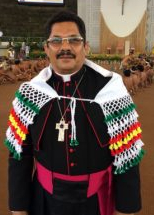 Also of note is the role of Bishop Karel Choennie of Paramaribo (at right). As his diocese, which covers all of Suriname, is included in the pan-Amazon region, he is an automatic participant, but he has also served on the Presynodal Council, which was tasked with the preparations for the upcoming assembly. Another member of this body is Bishop Erwin Kräutler, the Austrian-born bishop-prelate emeritus of Xingu in Brazil. The 80-year-old prelate presents himself as a close confidant of Pope Francis, but he also supports a number of problematic changes to Catholic teaching and practice.
Also of note is the role of Bishop Karel Choennie of Paramaribo (at right). As his diocese, which covers all of Suriname, is included in the pan-Amazon region, he is an automatic participant, but he has also served on the Presynodal Council, which was tasked with the preparations for the upcoming assembly. Another member of this body is Bishop Erwin Kräutler, the Austrian-born bishop-prelate emeritus of Xingu in Brazil. The 80-year-old prelate presents himself as a close confidant of Pope Francis, but he also supports a number of problematic changes to Catholic teaching and practice. Tuesday saw the passing of Cardinal José de Jesús Pimiento Rodríguez. The 100-year-old Colombian prelate was the emeritus archbishop of Manizales and was made a cardinal by Pope Francis in 2015. In
Tuesday saw the passing of Cardinal José de Jesús Pimiento Rodríguez. The 100-year-old Colombian prelate was the emeritus archbishop of Manizales and was made a cardinal by Pope Francis in 2015. In  Upon Cardinal Pimiento’s death, the title of oldest cardinal fell to Cardinal Roger Etchegaray, only for him to pass on that title the next day. The 96-year-old French cardinal-bishop served as archbishop of Marseille before taking on duties in Rome, heading the Pontifical Councils for Justice and Peace and “Cor Unum”. Even after retiring he was an active advocate for peace in the world, as recalled by Pope Francis in
Upon Cardinal Pimiento’s death, the title of oldest cardinal fell to Cardinal Roger Etchegaray, only for him to pass on that title the next day. The 96-year-old French cardinal-bishop served as archbishop of Marseille before taking on duties in Rome, heading the Pontifical Councils for Justice and Peace and “Cor Unum”. Even after retiring he was an active advocate for peace in the world, as recalled by Pope Francis in 
 (pictured at left giving a homily at the Church of the Frisians in Rome in 2015)
(pictured at left giving a homily at the Church of the Frisians in Rome in 2015)
 Bishop Hans van den Hende, chairman of the Dutch Bishops’ Conference and as such a participant in the meeting, decribes the context of his meetings with victims as follows:
Bishop Hans van den Hende, chairman of the Dutch Bishops’ Conference and as such a participant in the meeting, decribes the context of his meetings with victims as follows: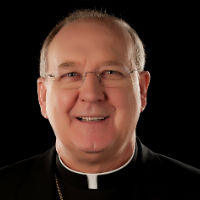 In 2014, Pope Francis
In 2014, Pope Francis 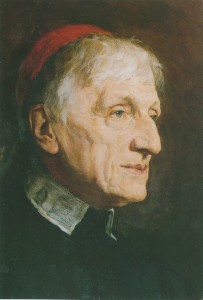
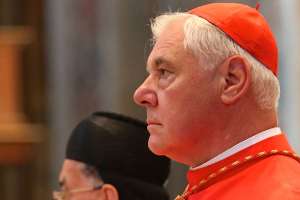 On Friday, Cardinal Gerhard Müller, former prefect of the Congregation for the Doctrine of the Faith and now a sort of free-roaming cardinal with no specific mission, issued a “
On Friday, Cardinal Gerhard Müller, former prefect of the Congregation for the Doctrine of the Faith and now a sort of free-roaming cardinal with no specific mission, issued a “ The manifesto is in the first place a summary of the
The manifesto is in the first place a summary of the 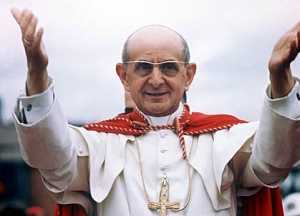 Although he was canonised last October, the liturgical texts for the memorial of Pope Saint Paul VI were published only today.
Although he was canonised last October, the liturgical texts for the memorial of Pope Saint Paul VI were published only today.